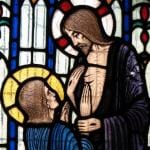By Tyler Heston
*Special to R3
In Benjamin Ray’s African Religions’ chapter “Creation and Origins,” various stories and myths were gathered to show the similar beliefs between different African cultures. One story was the Batammaliba people’s creation story, which will be examined here. These people attributed creation to the self-existent and androgynous God Kuiye, who is the “master architect” of the earth. We see this belief in Kuiye as master architect in the details of the myth; he created the structure of the world by constructing wooden beams covered in ground iron ore.
When it comes to the creation of human beings, the Batammaliba have four different stories. The one begins as Kuiye carves a human being out of wood, so that he will not be alone. “If I am alone, is that good?” he asked himself. After he put the carving in a granary support for three days, the female ancestor was finished. However, Kuiye knew he could not leave the woman alone and found another piece of wood to carve, which become the first man. They had children together, and, as the Batammaliba say, “we have become numerous.” Kuiye dwelt with these people in Linaba, a sort of paradise world. He taught them to build simple houses and provided for their every need, which eventually caused the humans to become bored. Kuiye, in light of the humans’ complaints, decided to leave the world. He brought rains and winds, plants for food, and guidance on how to survive in the world.
Throughout their myth of creation, the Batammaliba express the importance of planning and order. Not only is Kuiye the master architect, but the Batammaliba consider themselves to be “the real architects of the earth.” This same theme is seen in various ways of life for the Batammaliba. Ritual practices reflect the plans of Kuiye; every four years the Batammaliba re-sanctify the land with a sacrificial goat by dragging the body in a circle to represent the way Kuiye inscribed a circle around the original structure of earth to make it round and solid. The typical structure of houses in the tribe also reflects the structure of the universe; the three floors represent the three divisions of the universe: the sky, the earth, and the underworld. The deliberate way the Batammaliba go about life is seen clearly in the way they tell the stories of the creation of the earth; this idea that there is a specific plan in creation is a integral theme to Batammaliba myth.
There are both similarities and differences between the Batammaliba creation myth and the religious creation story I knew as a child, the traditional Judeo-Christian creation hymn. Although the details are very different, we see God as creating with order in both religious traditions; in the Judeo-Christian story, God created the world in six days, devoting each day to a certain aspect of creation, speaking into existence light the first day and land and vegetation on the third day. Similarly, we see the intentional plan of God in the creation of human beings, especially as he commissions them to “be fruitful and multiply.” In addition, initially, the human race in both stories dwelt in a sort of paradise, a perfect world.
Although both stories have similar themes in that they both propose that the human race is the most important part of creation, put here intentionally by God, who wanted them to and taught them how to inhabit the earth, there are also differences. One major difference is in the way that humans were separated from God and stopped living in paradise. The Batammaliba myth says that God “tired” of the complaints of the human race, bored with nothing to do in the perfect world. Therefore, Kuiye left and taught them to live. The Judeo-Christian story focuses on the wrongdoing of the human race. The first human beings, Adam and Eve, disobeyed God and were therefore banished from the paradise. Through this, death and suffering entered the world. The Batammaliba seem to make the separation from God a much less important idea.
Creation myths across the globe vary in many different way, often reflecting the personality of the culture in which they originate. The Batammaliba obviously stress the wrongdoings of human beings much less than the Jewish people did. In the same way, it is simple to pull out themes from other cultures’ myths and stories that clearly connect to the belief system and way of life of the people group. Still, in an astounding way, creation stories throughout the world connect. It is not uncommon to find two very different cultures that have very similar creation beliefs. The mixture of diversity and similarity when it comes to beliefs about how we got here, especially across the African globe, is a beautiful thing and shows that humans, while individually unique, really are all of the same race.
Tyler Heston is a junior at the University of Memphis, studying Religion in Society. Although he has not decided what to pursue after graduation, graduate school and divinity school are two possibilities. In the future, he wants to be involved in bi-vocational ministry and plant house churches. Theologically, he carries Pentecostal, Quaker, emergent, and even evangelical convictions; he believes that Christ can be seen in all branches of the church and that there is even value in other religious traditions. Most of all, he believes that he will never have the answers for everything, and he’s pretty okay with that.















